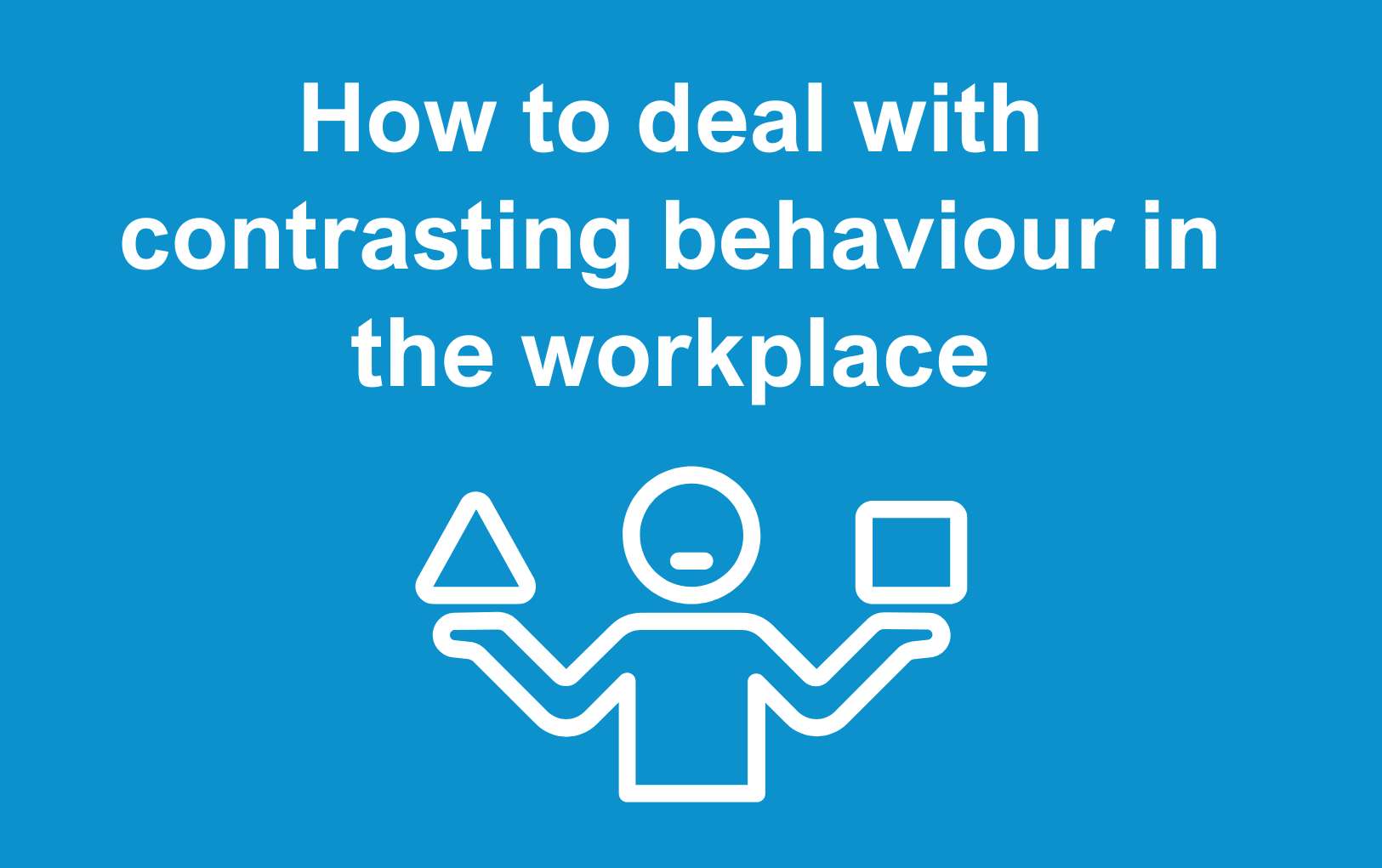Easter is a time cherished for its themes of renewal and reflection, also brings forth the delightful tradition of indulging in chocolate eggs. However, beneath the surface of festive cheer lies a reservoir of valuable lessons applicable to the workplace. Much like the exhilarating Easter egg hunt, the dynamics of managing employees effectively parallel the quest for hidden treasures.
Within your workplace, akin to the brightly shining Easter eggs, are employees who consistently exceed expectations, displaying dedication, innovation, and teamwork. Recognising and rewarding these “good eggs” not only fosters a culture of appreciation but also incentivises you and others to strive for excellence.
Conversely, there may be individuals whose behaviour or performance poses challenges to the harmony of your workplace. Similar to the eggs that may not quite meet expectations, these “bad eggs” require careful management to address issues promptly and maintain a positive work environment. This might involve constructive feedback, coaching, or, if necessary, more formal interventions.
Moreover, Easter serves as a reminder of the importance of inclusivity and diversity in your workplace. Just as Easter celebrates the joy of new beginnings, embracing the unique strengths and perspectives of every team member enriches your collective experience and drives innovation.
In essence, the lessons of Easter extend beyond the festivities, offering you valuable insights into effective management practices, fostering a culture of appreciation, addressing challenges proactively, and celebrating diversity in the pursuit of organisational success.
In any workplace, you’ll encounter a diverse mix of individuals, each with their own unique strengths, motivations, and work ethic. While the majority of employees are dedicated, hardworking individuals who strive to contribute positively to the organisation, there may also be a small minority who exhibit behaviours that hinder productivity and disrupt the work environment. This dichotomy between good people and bad workers is a natural aspect of any workplace dynamic.
Good people in the workplace are those who consistently demonstrate integrity, professionalism, and a strong work ethic. They are reliable team players who go above and beyond to achieve goals and support their colleagues. These individuals often serve as role models within the organisation, inspiring others through their exemplary conduct and dedication to excellence. They contribute positively to the overall morale and productivity of the team, fostering a culture of collaboration and success.
On the other hand, bad workers are those who may exhibit a lack of motivation, accountability, or ethical behaviour in their roles. They may underperform, procrastinate, or engage in disruptive or disrespectful conduct that undermines team cohesion and organisational goals. These individuals may require additional support, guidance, or disciplinary action to address their behaviour and performance issues effectively.
It’s important for organisations to recognise the presence of both good people and bad workers in the workplace and take proactive steps to manage and address their respective impacts. This may involve implementing clear expectations, providing ongoing feedback and support, and enforcing consequences for unacceptable behaviour. Additionally, fostering a positive work culture based on trust, respect, and accountability can help mitigate the influence of bad workers and empower good people to thrive.
Ultimately, while the presence of bad workers may pose challenges, the majority of employees are inherently good people who contribute positively to the workplace. By recognising and nurturing the talents and contributions of these individuals, organisations can create a conducive environment where everyone can thrive and contribute to the overall success of the team and the organisation as a whole.
Rewarding Good Eggs:
- Acknowledge Contributions: Just as finding a brightly coloured Easter egg brings joy, acknowledging and appreciating your employees’ contributions can significantly boost morale and motivation within your workplace. Imagine the delight on their faces when they’re recognised for their hard work and dedication, akin to the excitement of discovering a prized Easter egg.
Beyond mere acknowledgment, demonstrating genuine appreciation can have a lasting impact on your employee engagement and satisfaction. Consider incorporating personalised gestures such as handwritten notes or small tokens of appreciation tailored to each individual’s preferences or achievements. Such gestures not only reinforce a culture of gratitude but also strengthen the emotional connection between you and your employees.
- Provide Opportunities for Growth: Like unwrapping a chocolate egg to discover a delightful surprise inside, offering opportunities for training, skill development, or career advancement can be immensely rewarding for you and your team. It’s like giving you the chance to unwrap your potential and uncover new skills and capabilities.
Investing in your team’s growth demonstrates that you not only recognise their current contributions but also value their long-term potential and commitment to the organisation. It sends a powerful message that you’re dedicated to nurturing their professional development and empowering them to thrive in their roles.
- Incentives and Rewards: You, much like the excitement of stumbling upon a rare golden egg during an Easter egg hunt, offering incentives and rewards can ignite a sense of enthusiasm and motivation among your employees, propelling you to surpass expectations and strive for excellence. It’s akin to presenting you with a coveted prize for your outstanding contributions and dedication.
These incentives and rewards can take various forms, ranging from financial bonuses and tangible gifts to intangible perks and privileges. For instance, providing monetary bonuses or profit-sharing schemes can serve as tangible expressions of appreciation, acknowledging exceptional performance and incentivising your continued excellence
- Foster a Positive Work Environment: Just as Easter celebrations are imbued with positivity and joy, fostering a supportive and inclusive work environment can profoundly impact how your employees perceive their roles and contributions. Encouraging teamwork, open communication, and a culture of recognition serves as the cornerstone for cultivating a sense of belonging and camaraderie among your team members.
Emphasising teamwork not only facilitates collaboration but also promotes a collective sense of purpose and shared achievement. Encourage collaborative projects and cross-functional initiatives that leverage the diverse skills and perspectives of your team, fostering a culture where individuals feel valued for their unique contributions while working towards common goals.
Dealing with Bad Eggs:
- Address Issues Promptly: Just as a rotten egg can spoil the bunch, ignoring problematic behaviour in the workplace can have a detrimental impact on team dynamics and productivity. Addressing any issues promptly and directly is essential, using constructive feedback and clear expectations.
By intervening early, you can prevent the negative consequences from spreading and mitigate potential damage to team cohesion and performance. Providing specific examples of the behaviour in question and its impact, along with guidance on alternative approaches, helps individuals understand the gravity of their actions and provides them with actionable steps to improve.
- Offer Support and Guidance: Sometimes, a “bad egg” in the workplace may not necessarily be inherently problematic but could be struggling due to personal challenges or external factors. It’s important to recognise that everyone faces difficulties at some point in their lives, and offering support, guidance, and resources can make a significant difference in helping them overcome obstacles and get back on track.
Taking a compassionate approach to address the underlying issues is key. Instead of immediately resorting to disciplinary measures, take the time to understand the root cause of the problematic behaviour. Is the employee experiencing personal stress, health issues, or difficulties in their personal life? By empathising with their situation, you can establish a supportive framework for addressing their needs effectively.
- Set Boundaries: Like setting boundaries during an Easter egg hunt to ensure fairness and safety, it’s crucial to establish clear boundaries and consequences for unacceptable behaviour in the workplace. Communicating expectations clearly and enforcing policies consistently are key to maintaining a respectful and professional environment.
By clearly outlining acceptable and unacceptable behaviours, as well as the consequences for violating workplace policies or standards of conduct, you provide employees with a framework for appropriate conduct. This clarity ensures that all employees understand what is expected of them and what will happen if those expectations are not met.
- Consider Disciplinary Action: In cases of serious misconduct or repeated offences, it’s crucial to address the situation promptly and appropriately to maintain the integrity and well-being of the workplace. While minor infractions may be resolved through informal discussions or coaching, more serious breaches of conduct may necessitate disciplinary action.
Disciplinary action serves not only to address the immediate issue at hand but also to reinforce the importance of upholding company policies and standards of behaviour. It sends a clear message that certain behaviours are unacceptable and will be met with consequences.
The parallels between Easter and effective employee management highlight the importance of fostering a positive work environment where recognition, growth, and accountability are prioritised. Much like the joy of finding brightly coloured eggs, acknowledging, and rewarding exemplary performance boosts morale and motivates you to excel. Similarly, addressing problematic behaviour swiftly and fairly prevents issues from festering and ensures a harmonious workplace atmosphere.
By nurturing a culture of inclusivity and support, offering opportunities for professional development, and maintaining clear boundaries and consequences, you lay the foundation for a thriving workforce. You feel valued, empowered, and motivated to contribute your best, knowing that your efforts are recognised, and your concerns are addressed.
Ultimately, successful employee management requires a proactive and holistic approach, where the well-being and professional growth of each team member are prioritised. By embodying the principles of fairness, respect, and continuous improvement, you cultivate a workplace where every individual has the opportunity to thrive and contribute to the success of the organisation. Just as Easter signifies a time of renewal and celebration, effective employee management fosters an environment where growth, recognition, and harmony abound, leading to greater organisational success and employee satisfaction.







